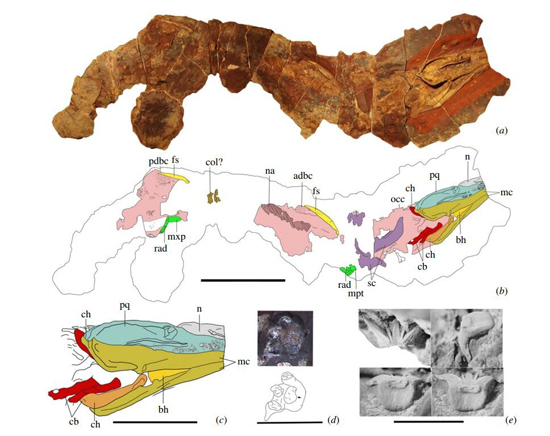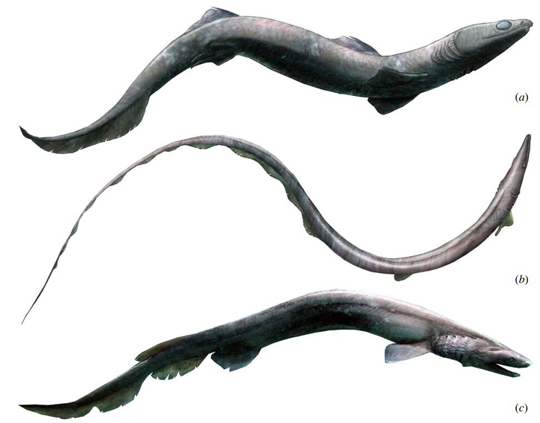The First Skeletal Remains of Phoebodus (Prehistoric Shark)
The First Skeletal Remains of Phoebodus (Prehistoric Shark)
Morocco might be famous for its trilobite fossils, but this North African country has a very rich fossil heritage, one that covers a lot more fauna than just arthropods. Take for example, the discovery of the first ever skeletal material associated with the ancient shark Phoebodus. A team of scientists, including researchers from the University of Zurich (Switzerland) and the University of Chicago, have published a paper describing fossil material from a shark that was previously only known from its teeth (only three teeth in total).
Skeletal Fossil Material (Cranial and Postcranial) – Phoebodus saidselachus

Phoebodus saidselachus sp. nov., (a–d) PIMUZ A/I 4712 and (e) PIMUZA/I 4656. (a) Ferruginous nodule containing cranial and postcranial remains; (b) drawing, scale bar, 200 mm; (c) detail of visceral skeleton, scale bar, 100 mm; (d) tooth, scale bar, 5 mm; (e) tooth (various views).
Picture credit: Proceedings of the Royal Society B. (Linda Frey and Christian Klug – University of Zurich)
Phoebodus saidselachus
The fossil material was found in the Atlas Mountains of Morocco, the fossil is remarkably well preserved considering that the skeleton of the animal was comprised of soft cartilage and not hard bone. Around 370 million years ago, this part of north Africa was covered by a warm, shallow tropical sea. The researchers were able to identify several skulls and parts of another species of Phoebodus from the same fossil deposits. Writing in the academic journal the “Proceedings of the Royal Society B”, the scientists were able to provide a full description of Phoebodus and speculate on what this small shark might have preyed upon.
Speculating on the Body Plan of Phoebodus saidselachus

Possible body reconstruction of (a) P. saidselachus sp. nov., Late Devonian, (b) T. gracia [11], Early Carboniferous, and (c) picture of the extant frilled shark Chlamydoselachus anguineus.
Picture credit: Proceedings of the Royal Society B.
What Did Phoebodus Look Like?
The researchers note that sharks like Phoebodus went extinct in an early part of the Carboniferous, a very long time before many of its features evolved in other modern sea creatures. The fossil reveals an eel-like body (anguilliform), a specialised braincase, a hyoid arch and elongated jaws. These features corroborate a likely close taxonomic relationship with the Carboniferous shark species Thrinacodus gracia (shown above in the picture (b).
A Similarity to Living Sharks
In addition, the fossilised material suggests a similarity between the long extinct Phoebodus genus and the living frilled shark Chlamydoselachus anguineus. The teeth of P. saidselachus are very similar to the teeth of the frilled shark. They are rounded and pointy and Phoebodus may have hunted and fed in the same way as frilled sharks. The research team also noted that the ancient shark resembles a modern gar (family Belonidae), as well. Whilst gars are not closely related to sharks, they might make a plausible marker for inferring behaviour in Late Devonian shark genera.
Now that palaeontologists have a better understanding of what Phoebodus actually looked like, this material and the other fossilised skulls found at this Moroccan locality can help them to map the radiation of the earliest elasmobranchs and to infer what sort of ecological niches in the ancient marine ecosystem they occupied.
Visit Everything Dinosaur’s website: Everything Dinosaur.

